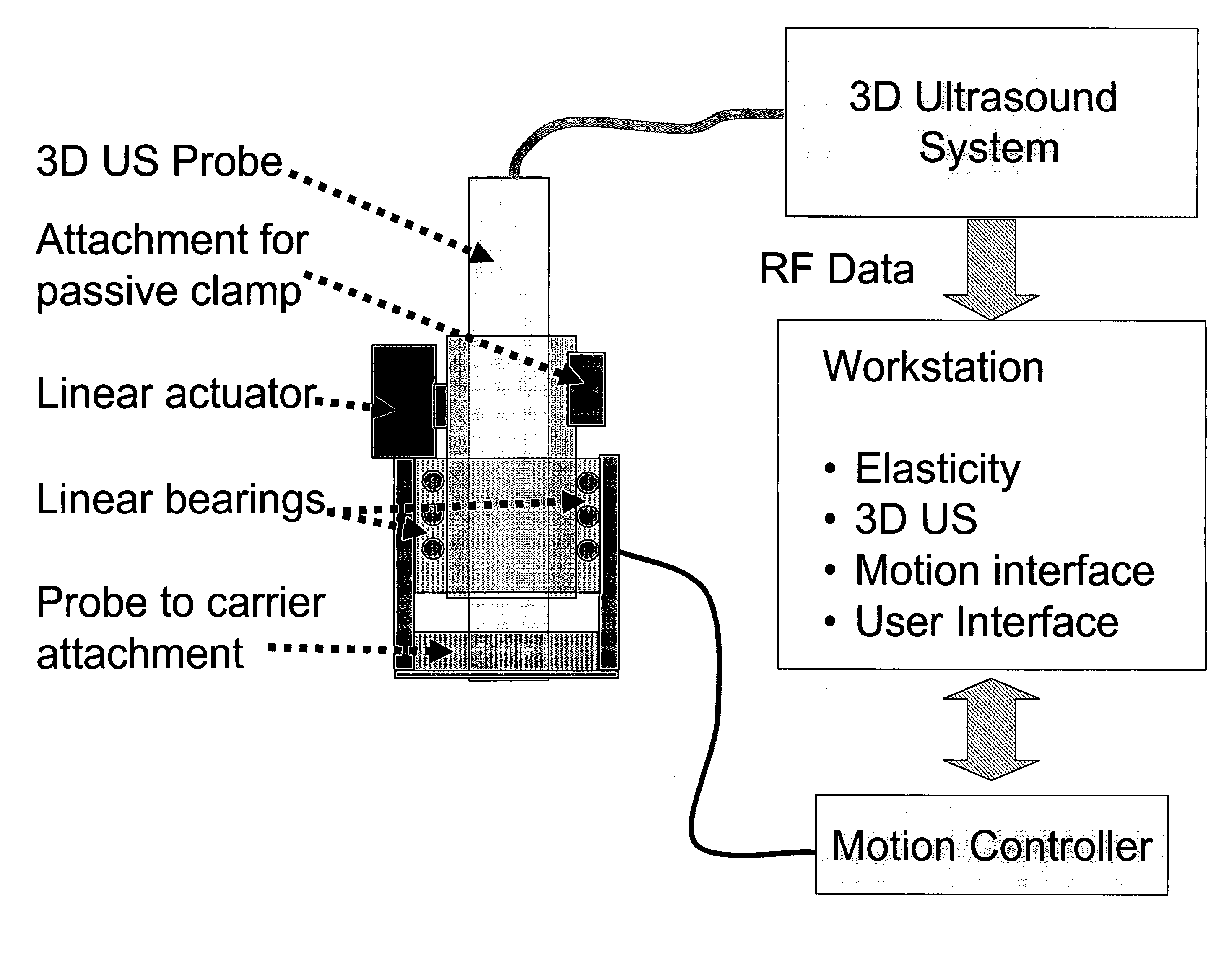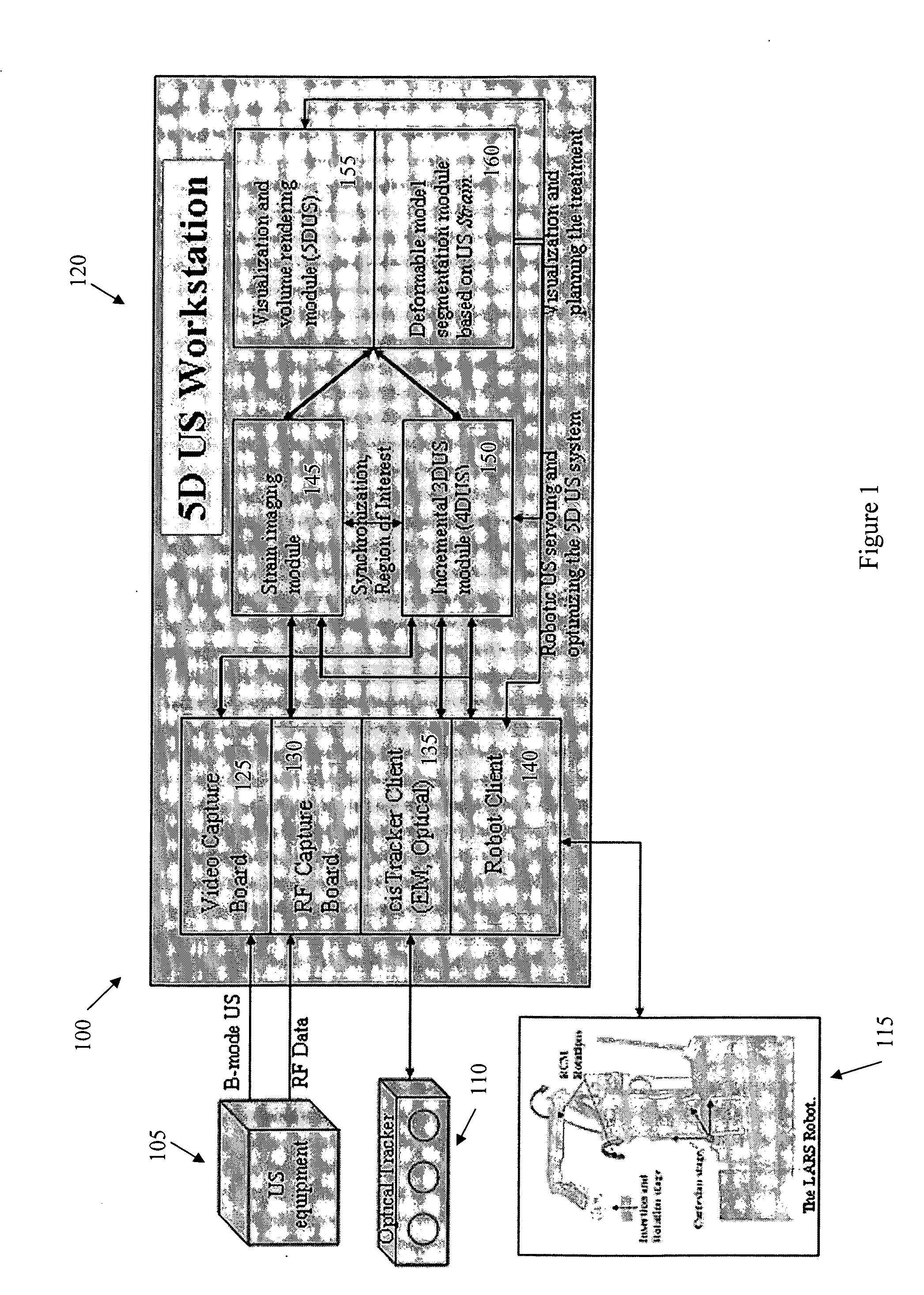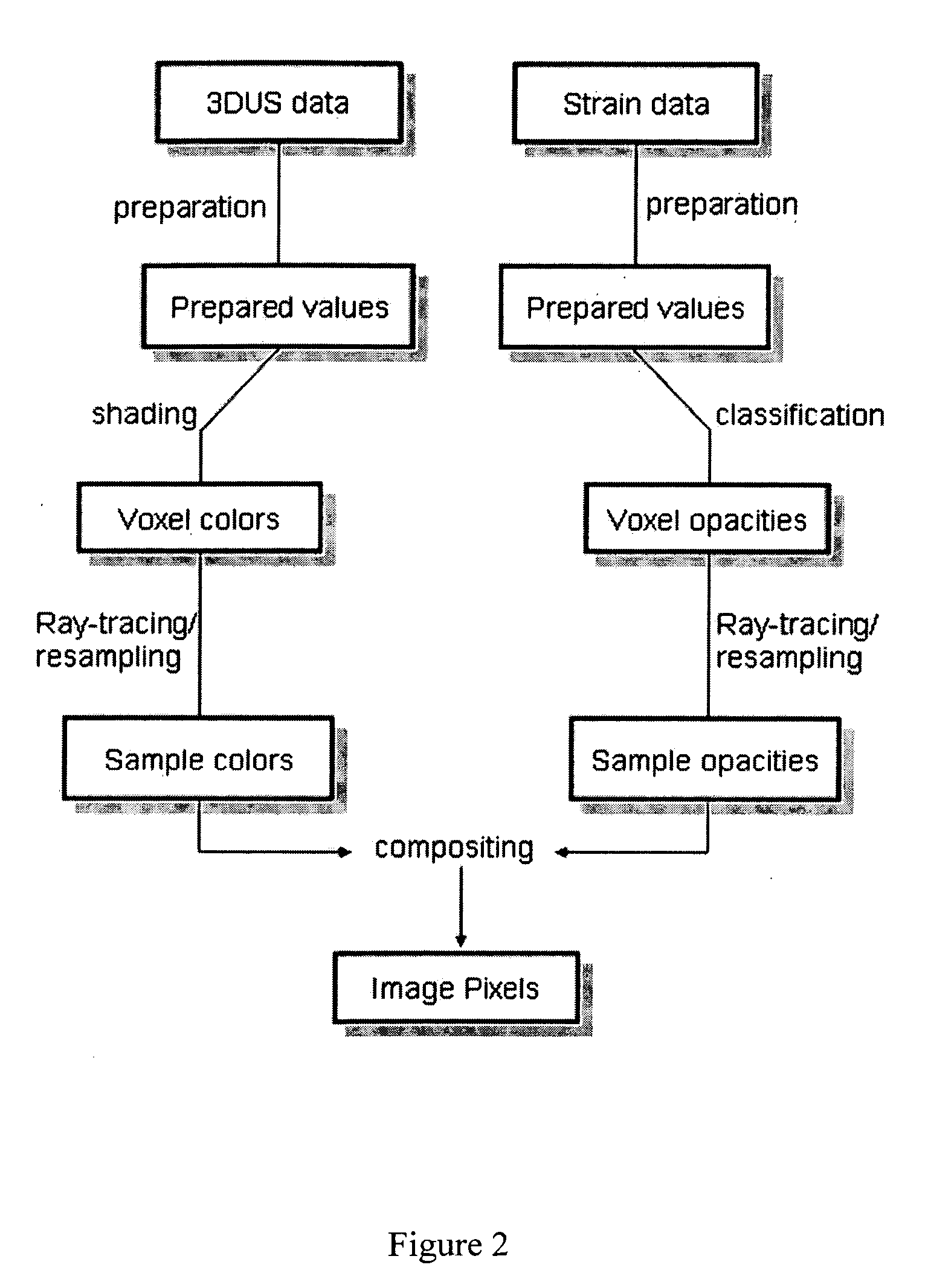Robotic 5-dimensional ultrasound
a technology of ultrasound imaging and robotics, applied in the field of ultrasound imaging, can solve the problems of inability to effectively identify, monitor or track the target tissue, and facilitate planning or control, and achieve the effect of accurate visualization of the target area, and accurate identification and segmentation of the target area
- Summary
- Abstract
- Description
- Claims
- Application Information
AI Technical Summary
Benefits of technology
Problems solved by technology
Method used
Image
Examples
Embodiment Construction
[0029] The focus of the present invention is a robotic 5D ultrasound system and method for use in the field of Image Guided Therapy (IGT) and, more generally, Computer Integrated Surgery (CIS). The robotic 5D ultrasound system and method, in accordance with exemplary embodiments of the present invention enhance “surgical CAD-CAM-TQM” systems by integrating over time 3D ultrasonic image data with strain (i.e., elasticity) image data.
[0030]“Surgical CAD” is analogous to computer-aided design (i.e., CAD) in manufacturing systems, wherein the CAD phase involves the design and / or planning of the intended treatment using an IGT system. In general, prior to such medical procedures, medical images, anatomical atlases and other information are combined for the purpose of generating a model of an individual patient. The model is then used for planning the treatment or intervention procedure. The present invention, however, offers new capabilities with respect to the planning based on more ac...
PUM
 Login to View More
Login to View More Abstract
Description
Claims
Application Information
 Login to View More
Login to View More - R&D
- Intellectual Property
- Life Sciences
- Materials
- Tech Scout
- Unparalleled Data Quality
- Higher Quality Content
- 60% Fewer Hallucinations
Browse by: Latest US Patents, China's latest patents, Technical Efficacy Thesaurus, Application Domain, Technology Topic, Popular Technical Reports.
© 2025 PatSnap. All rights reserved.Legal|Privacy policy|Modern Slavery Act Transparency Statement|Sitemap|About US| Contact US: help@patsnap.com



